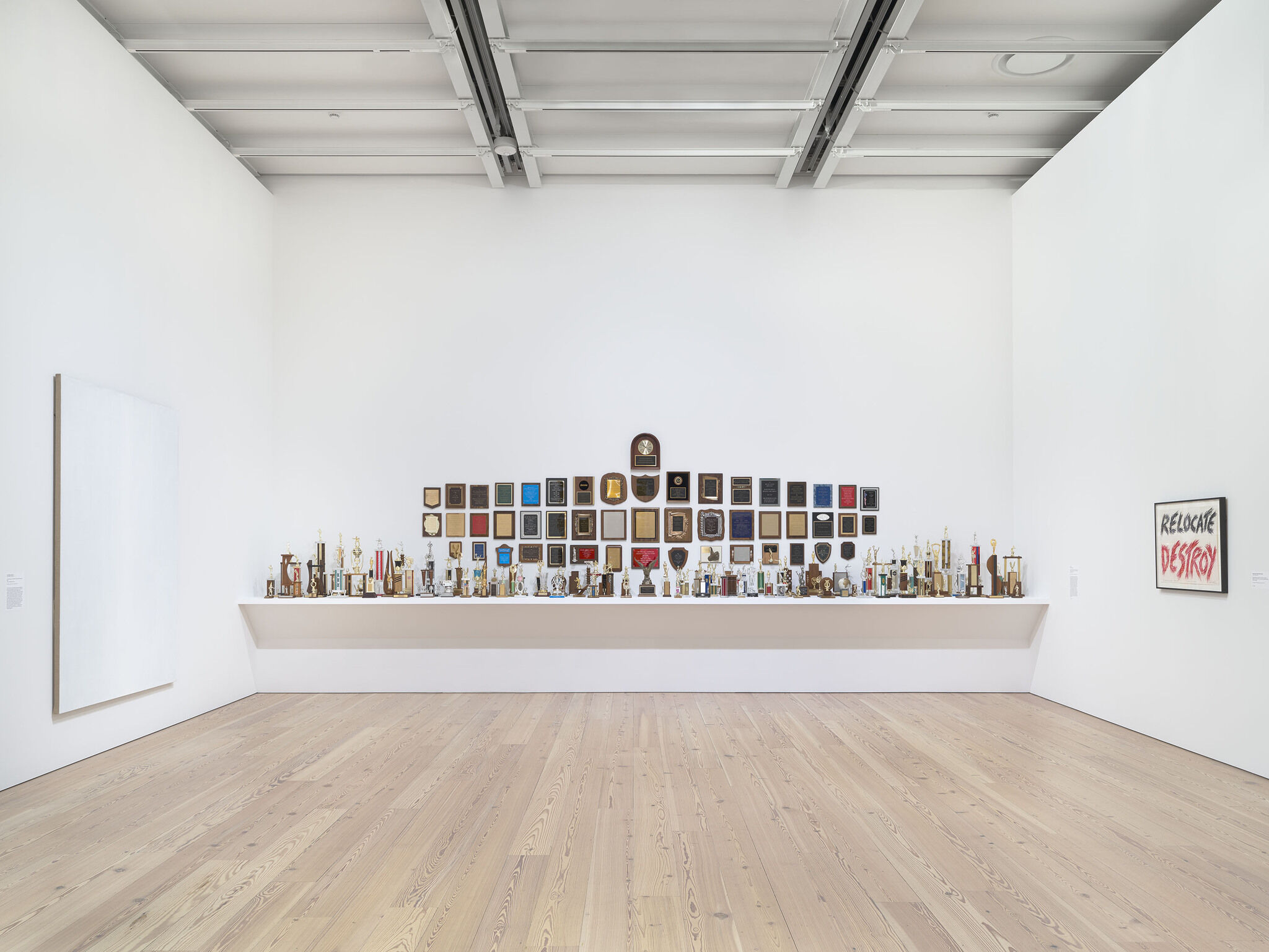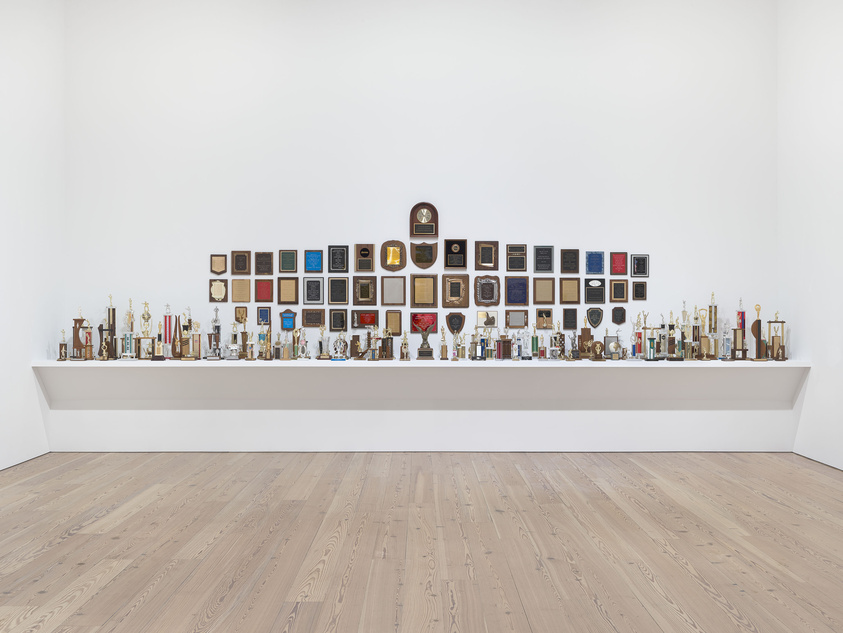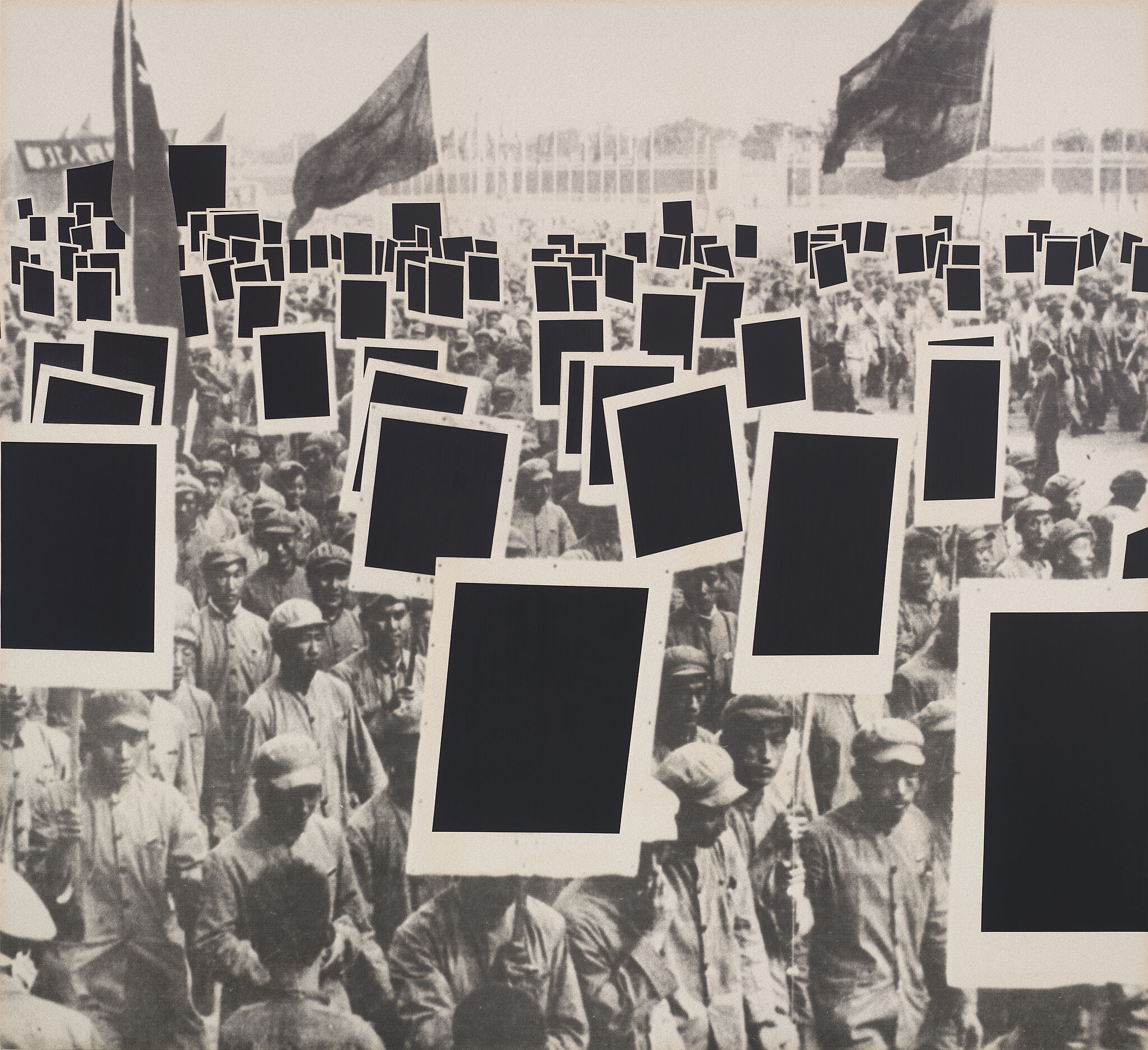Carl Pope
Some of the Greatest Hits of the New York City Police Department: A Celebration of Meritorious Achievement in Community Service
1994
Not on view
Date
1994
Classification
Installations
Medium
Engraved trophies
Dimensions
Dimensions variable
Accession number
95.82
Credit line
Whitney Museum of American Art, New York; gift of Carl and Karen Pope, Christopher and Ann Stack, and A. W. Stuart
Rights and reproductions
© artist or artist's estate
Audio
-
Carl Pope, Some of the Greatest Hits of the New York City Police Department: A Celebration of Meritorious Achievement in the Community, 1994
In An Incomplete History of Protest (Spanish)
0:00
Carl Pope, Some of the Greatest Hits of the New York City Police Department: A Celebration of Meritorious Achievement in the Community, 1994
0:00
Narrator: Carl Pope tituló esta obra Some of the Greatest Hits of the New York City Police Department: A Celebration of Meritorious Achievement in the Community (Algunos de los éxitos más importantes del Departamento de Policía de Nueva York: Una celebración de los logros meritorios en la comunidad). Era la segunda obra en la que usaba trofeos. La primera trataba sobre su ciudad natal, Indianápolis, Indiana, donde el oficial de policía Scott Haslar recibió un premio por asesinar a un hombre negro que no iba armado, Leonard Barnett. Para esta obra, Pope investigó las matanzas acontecidas en Nueva York entre 1949 y 1994.
Carl Pope: Hola, soy Carl Pope.
Esta colección de trofeos traza un mapa de la historia de la brutalidad policial y el diseño de los trofeos, pero también habla de una tercera historia: la historia de los premios entregados a oficiales por matar a sospechosos de color. Por medio de los ascensos vemos ese tipo de historia de premios por asesinatos por acciones policiales o golpizas por parte de la policía. Como el oficial que estranguló a Eric Garner, quien recibió un aumento de sueldo. Otras veces ganan medallas al valor. Creo que lo que hace de la colección de trofeos algo tan cautivador es que pone esos premios a la vista del público, en la mente de personas que normalmente no establecerían una conexión entre los premios que reciben los oficiales y los motivos por los cuales los reciben.
Cuando realicé la colección por primera vez, la gente quedó algo impactada. Michael Kimmelman, del New York Times, dijo que la colección era “exagerada”.
Veinticuatro años más tarde, la realidad de la colección de trofeos y de lo que representaba, lo que implicaba, ha dejado de ser una metáfora visual. Los trofeos ya no son un dispositivo visual. Los trofeos son, de hecho, un poco más literales que cuando creé la obra. Esa es una realidad que conocían las familias de aquellas personas asesinadas por la policía. Y creo que la realidad se está haciendo más real para el resto de nosotros.
-
0:00
Carl Pope, Some of the Greatest Hits of the New York City Police Department: A Celebration of Meritorious Achievement in Community Service, 1994
0:00
Narrator: Carl Pope called this work Some of the Greatest Hits of the New York City Police Department: A Celebration of Meritorious Achievement in the Community. It was his second work using trophies. He made the first about his hometown, Indianapolis, Indiana, where Police Officer Scott Haslar received an award for killing an unarmed Black man, Leonard Barnett. For this work, Pope researched killings that took place in New York between 1949 and 1994.
Carl Pope: Hi, my name is Carl Pope.
This trophy collection maps the history of police brutality and trophy design, but it also traces a third history—the history of rewards that officers receive for killing Black crime suspects. We see that sort of history of rewards for police action killings, police action beatings, through promotions. Like the officer who choked Eric Garner, he received a pay raise. Sometimes they win medals of valor. I think what makes the trophy collection so compelling is that it brings those rewards to public notice, in the minds of people who normally would not make that connection between the rewards that officers receive and why they receive those rewards.
When I first did the collection, people were a little shocked by it. Michael Kimmelman, at The New York Times called the trophy collection “overblown.”
Twenty-four years later, the reality of the trophy collection and what it mapped, what it implies, is no longer just some visual metaphor. The trophies are not a visual device anymore. The trophies actually are a little more literal than they were when I made them. That's a reality that the families of those people who were killed by the police knew. And I think that reality is becoming more of a reality for the rest of us.
Installation photography
-


Installation view of An Incomplete History of Protest: Selections from the Whitney’s Collection, 1940–2017 (Whitney Museum of American Art, New York, August 18, 2017–). From left to right: Tim Rollins and K.O.S., The Whiteness of the Whale II (after Herman Melville), 1991; Carl Pope, Some of the Greatest Hits of the New York City Police Department: A Celebration of Meritorious Achievement in Community Service, 1994; Hock E Aye VI Edgar Heap of Birds, Relocate Destroy, In Memory of Native Americans, In Memory of Jews, 1987. Photograph by Ron Amstutz


